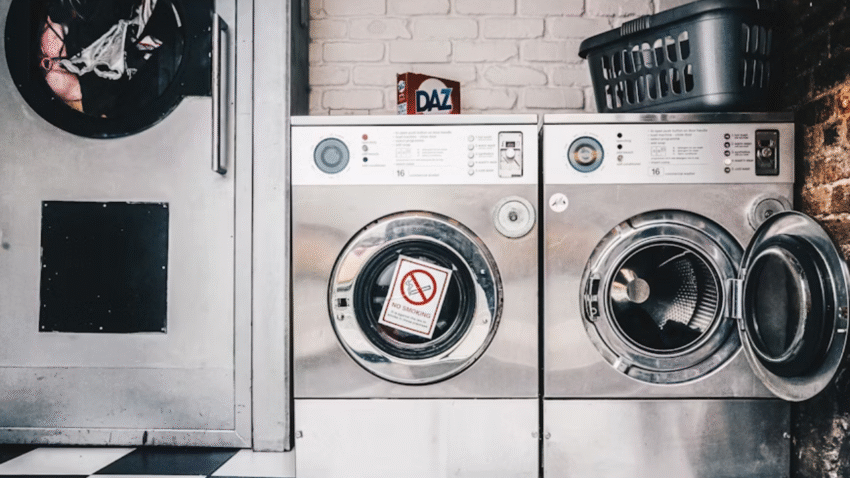Introduction
It’s easy to think that more detergent equals cleaner clothes — but in reality, using too much can do more harm than good. Overusing detergent not only wastes money but can also leave residue on clothes, damage your washer, and even create musty odors. Learning how to prevent wasting detergent when washing clothes will help you save money, protect your appliances, and get cleaner results with less effort.
Why Preventing Detergent Waste Matters for Your Laundry Room
Using detergent wisely is important for more than just cost savings:
- Saves money by making each bottle or box last longer.
- Improves wash results by preventing soap buildup on fabrics.
- Extends the life of your washer by reducing residue in hoses, drums, and seals.
- Protects the environment by reducing chemical runoff into wastewater systems.
With a few smart habits, you can avoid waste and still get perfectly clean clothes every time.
Step-by-Step Guide to Prevent Wasting Detergent
Step 1: Read the Detergent Instructions
Every detergent brand has a recommended amount based on load size, water hardness, and soil level. Check the cap or scoop markings and measure accurately instead of pouring by eye.
Step 2: Match Detergent Amount to Load Size
- Small Loads: Use about ½ of the recommended amount.
- Medium Loads: Use the full recommended amount.
- Large or Heavily Soiled Loads: Use slightly more, but never double unless specified.
Step 3: Use High-Efficiency (HE) Detergent for HE Washers
If you have a high-efficiency washer, always use HE detergent. Regular detergent creates too many suds, which can leave residue and require extra rinsing, wasting both water and soap.
Step 4: Adjust for Water Hardness
In soft water areas, detergent goes further, so you can use less. In hard water areas, you may need slightly more — or consider adding a water softener to improve cleaning efficiency.
Step 5: Pre-Treat Stains Instead of Over-Soaping
If you have heavily soiled clothes, don’t just dump in more detergent. Pre-treat stains with a small amount of liquid detergent or a stain remover, then wash with your normal amount of detergent.
Step 6: Use the Right Cycle and Temperature
Hot water dissolves detergent more effectively, but for most loads, warm or cold water works well with modern formulas. Choosing the correct cycle prevents the need for rewashing — another form of detergent waste.
Step 7: Avoid “Just in Case” Extra Soap
Adding an extra splash of detergent for “good measure” is one of the biggest causes of waste. Stick to measured amounts, even if the clothes look extra dirty.
Step 8: Store Detergent Properly
Keep detergent in a cool, dry place with the lid tightly closed. Exposure to humidity can cause powder detergent to clump, making accurate measuring harder.
Common Mistakes to Avoid
- Pouring Without Measuring
- Mistake: Guessing the amount often leads to overuse.
- Solution: Always use the cap or scoop.
- Thinking More Soap Cleans Better
- Mistake: Excess detergent leaves residue on clothes.
- Solution: Follow label guidelines.
- Ignoring Washer Type
- Mistake: Using regular detergent in an HE washer.
- Solution: Always match detergent type to machine type.
- Rewashing Clothes Unnecessarily
- Mistake: Adding more soap after a load didn’t get clean.
- Solution: Pre-treat stains instead of rewashing whole loads.
- Letting Detergent Go Stale
- Mistake: Leaving detergent open or exposed to moisture.
- Solution: Seal and store correctly.
Extra Laundry Tips & Hacks to Save Detergent
- Use Concentrated Detergents: They require smaller doses, saving money and storage space.
- Try Detergent Pods: Pre-measured pods eliminate the guesswork, though they can be more expensive per load.
- Mark Your Cap: Use a permanent marker to highlight the correct fill line on the detergent cap so you never overfill.
For more laundry efficiency ideas, check out our guide on How to Extend the Life of Your Washer and Dryer — another great way to save money in the laundry room.
Conclusion
Preventing detergent waste is all about accurate measuring, matching amounts to load size and water type, and pre-treating stains instead of over-soaping. By following these steps, you’ll save money, protect your clothes and washer, and keep your laundry routine eco-friendly.
Bookmark this guide to keep your detergent use efficient, effective, and waste-free every time you do laundry.
